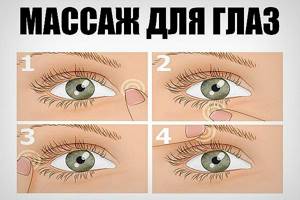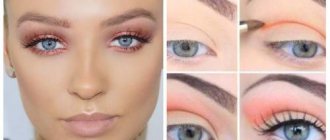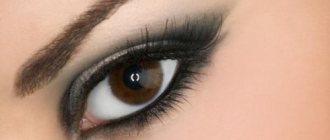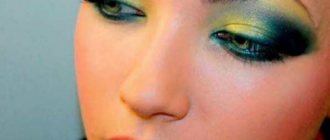Causes of the symptom
The reasons for frequent, severe blinking of the eyes include the following factors:
- Dryness of the mucous membrane of the visual organ, when there is dry air indoors or outdoors, wind. Prolonged work at the computer also becomes a consequence of dryness.
- Presence or development of eye diseases. These often include conjunctivitis, barley, keratitis, and blepharitis.
- Lack of vitamins in the human body. The state of vitamin deficiency subsequently leads to impaired metabolism and hormonal imbalances.
- Allergic reaction. When the allergen gets into the mucous membrane of the eye, profuse lacrimation begins. Therefore, frequent blinking occurs.
- Emotional and psychological reason. Sometimes a person unconsciously attaches special meaning to words and blinks. Increased eye blinking in adults occurs when there is excessive physical and emotional stress.
- Teak. The disease develops due to constant stress and neuroses. This nervous system disorder is divided into 2 types - primary and secondary. In the first case, central nervous system disorders from childhood return to the person. The secondary type develops with a serious impairment of brain activity.
- Getting foreign particles or objects into the eye. Frequent blinking is caused by an eyelash or a grain of sand that accidentally ends up on the mucous membrane.
- Bad habits. Typically, eye blinking in an adult occurs with frequent smoking and drinking alcoholic beverages.
- Trauma of the century.
- Tourette's disease. The disease is diagnosed by a neurologist. At the same time, people often complain of involuntary blinking in an adult along with some sounds and obscene language.
- Reaction to bright rays of light. When the light falls sharply on the eyes, the mucous membrane is irritated. Therefore, frequent blinking from light appears in adults.
- Parkinson's disease. If this disease is present, the patient develops tremors. The reason why only the left or right eye blinks is that the tremor does not always appear the same on the paired organs. Sometimes blinking in adults is completely absent.
I blink my eyes often what is this
At the clinic, during a routine examination at age 1, the child was diagnosed with “mixed astigmatism.” At a year and a half in the clinic, astigmatism was questionable, because... The “children's smiling radar” was broken and they gave directions to Mokhovaya. A month later (at 1.7 years), a young ophthalmologist on Mokhovaya confirmed the diagnosis of “hypermetropic astigmatism.” I wrote out a prescription for glasses to wear all the time - OD: Cyl +2.5; Ah 90. OS: Cyl +2.0 ; Ah 90. and turnout in 3 months. I decided to double-check at a paid clinic; a WEEK later, the ophthalmologist at the paid clinic confirmed the diagnosis and also wrote out a prescription for glasses to wear constantly. the recipe, by the way, differs from the first one: recipe- OD: Cyl +2.5; Ah 85. OS: Cyl +2.5; Ah 95. and said something like “you ALREADY have one eye that is not round, but oval,” saying, “I can see it with the naked eye.” THIS IS NOT HEREDITARY! I was generally shocked that the child had some kind of vision problems, because, in my opinion, she sees objects well both in the distance and small things close up. At 1.8 years old we bought glasses. The child wore them for the first couple of hours, “taking them off and putting them on” (she took them off only because there was something unusual on her face), and from the next day she wore them well, taking them off only to scratch her eyes. and to the question “shall we put on glasses?” she nodded her head and let them put them on, and calmly walked around in them. This went on for 3 days! on the 4th day of wearing glasses so well, I noticed that she rubs her eyes very often (it seems like this is normal, adaptation is underway), BUT she rubs one eye (right) VERY hard and often, and, moreover, she began to squint her eyes in order to see something specific in the distance (the right one especially)! for example, on the street, about 10 meters from us, our grandmother is walking among people, I ask her to look for grandmother with her eyes, she looks/squints/finds/smiles…. I've never squinted without glasses! Now I’m afraid to wear glasses, isn’t it getting worse?! I read a lot of information and concluded that until the age of three it makes sense not to interfere with the formation of a child’s eyes. but this is a risk, because the time when it was possible to correct vision with glasses may be missed. I also read that such astigmatism, if not hereditary, then happens in children due to eye injury... I remembered that at 11 months (a month BEFORE the “one-year” examination) there was such a case: I was a little distracted, so I didn’t see exactly ...the child was looking at a toy on an artificial Christmas tree...I only ran up when I saw that the child was writhing as he walked away from the tree, you know, as if something had gotten into his eye - he was squinting and blinking. Well, I blinked/teared and ran on. I completely forgot about this story. QUESTION No. 1 - if some kind of scratch/damage had happened after that situation, would the ophthalmologist have seen this moment a month later during a routine examination? Or are these different actions - looking at injuries and looking at vision? Then I sifted through a lot of information from which I came to the conclusion that the ophthalmologist MUST prescribe glasses, in order to at least relieve himself of responsibility for the consequences if glasses should have been prescribed, but she did not prescribe them. and it’s logical - after all, all ophthalmologists say “there are no guarantees that glasses will help to idealize your vision, so you start wearing them, we’ll control the dynamics, and in a couple of years we’ll probably cancel the glasses, or spectacle correction will be powerless and you’ll have to continue walk them." Do you understand the process of abdicating responsibility?! After all, there is no way to prove the fact that I had to leave the glasses for my whole life, not because the cornea is like this from birth, but because it was impossible to interfere with the formation of the cornea with glasses at such an early age! What baffles me at the moment is the fact that the child seems to like wearing glasses. I have a lot of character - if I don’t like something, it’s very difficult to persuade her! and sometimes she herself asks to put on glasses. Literally every couple of hours she takes it off herself (either she’s tired or it interferes with running), after 5-10 minutes I suggest putting on glasses and she easily agrees to substitute her face (rarely whines for about 5 minutes). It means she likes wearing glasses, it means she’s comfortable. But here again there are doubts - is it worth creating these conveniences for her?? Perhaps the cornea itself is going to begin to see clearly after some time (by the same three years)?! But if you start helping the cornea see better ahead of time (with glasses), then something will go wrong and, roughly speaking, the glasses will remain for life. QUESTION No. 2: is it correct and I reason that at this age there is a POSSIBILITY that glasses can help the cornea? or vice versa, do glasses seem to give the correct direction for the development of the cornea? While we were waiting for the glasses to be made, I decided to have my vision checked at an adult clinic... *continued in comments*
Diagnostic measures
Diagnosis of the disease and subsequent treatment of frequent blinking in an adult are prescribed by an ophthalmologist. But in some cases, rapid eye blinking in an adult is not associated with eye diseases. Therefore, after the initial examination, the ophthalmologist sends the patient to other specialists:
- neurologist;
- allergist;
- infectious disease specialist;
- neurosurgeon.
Diagnostic tests for high eye blink rates include the following procedures:
- Study of the medical history.
- Careful examination of the visual organ inside and outside using ophthalmic instruments.
- Patient interview. Such an event helps the doctor determine the exact picture of the disease based on symptoms and signs.
- Tests for allergic reactions.
- General clinical blood test.
Sometimes one of the listed studies is enough to determine eye pathology.
Additionally, we invite you to read the article: frequent eye blinking in childhood.
What to do
If the cause of frequent eye blinking is normal fatigue, then you need to arrange a good rest for yourself and get a good night's sleep. With a very intense work rhythm, it is necessary to properly organize the day. Get up 30-40 minutes earlier and do a little exercise for your body. It is very important to go to bed on time, no later than 22:00. This daily routine will allow you to spend your energy more properly and stop excessive overwork.
If your eyesight is dry, leading to excessive blinking, you should limit the time you spend at the computer or in front of the TV. When working at the computer for long periods of time, take short breaks for yourself. While resting, close your eyes for a couple of minutes and let them rest.
If the cause of frequent blinking is bright light, then you need to eliminate the source of bright light. This can be either bright sunlight or bright artificial lighting.
If your child is very tired at school or due to extensive homework, which leads to frequent blinking, then take active walks in the fresh air for the child. Such walks will help relieve tension and stop frequent blinking.
If you notice that you are overly critical of your child and set high demands for him, become softer and more condescending to him during communication. Don't punish for small things and don't judge harshly for mistakes. After all, no adult is immune from mistakes. Praise your child at every opportunity and support him.
Note! If you see that the child is blinking intensely, then you do not need to focus his attention on blinking. This will only make the situation worse. Better give him a glass of water to drink and help him relax.
If any other reasons lead to discomfort, then you need to visit an ophthalmologist for diagnosis and treatment.
Treatment
Treatment of frequent blinking in an adult involves complex therapy. The patient is helped by medications, physiotherapy, special exercises, and traditional medicine.
Drugs
To combat the described symptom in an adult, drug therapy is first used. The most commonly prescribed medications are:
- “Baclofen.” Sold in tablet form. The medicine is prescribed in the presence of spasms and other paralytic pathologies.
- “Phenibut.” The main property of the medication is to improve well-being during excessive emotional stress. Prescribed to people with nervous disorders.
- “Clonazepam.” The medicine is anticonvulsant in nature. Contraindicated for use by people with alcohol dependence or respiratory failure.
- "Cyclodol". This drug is prescribed when Parkinson's disease is diagnosed.
Physiotherapy
If an adult blinks frequently, thermal physiotherapy is prescribed if there is an inflammatory process on one of the eyelids and appendages. A warm paraffin application is applied for 5 minutes.
Heat-based physiotherapy is not prescribed for people with tuberculosis, hemophilia, glaucoma, or cancer.
Exercises and massage
If an adult blinks his eyelid frequently, special exercises and massage with gymnastics are also recommended.
- To begin, the patient closes his eyes and tensely moves them to the right. This position is held for 30 seconds. Then the eyes move to the left side. Afterwards, the closed eyes are raised up and lowered as far as possible. You need to stay in each position for half a minute.
- The next exercise is movement in a circle with closed eyelids to the right side. You need to do about 5 laps. Then the eyes are closed again for half a minute. Now circular movements are made to the left. At the end of the exercise, close the eyelids again.
- Next, press with your fingertips on your closed eyelids for 30 seconds. Gymnastics of the eyelids is carried out 4 times daily.

It is also necessary to perform a therapeutic massage with an orthopedic bias every day. First, rub your fingers along the superciliary arch with massage movements. The eyelids should be closed and squeezed shut. Afterwards, the edge of the orbit from below is grasped and raised. Then the eyelids are closed again for 30 seconds.
The next massage action is pressing on the closed eyes and releasing the fingers. This movement is done 4 times. At the end, open your eyes with your palms and hold them in this position for half a minute. The time for massage is calculated individually.
Also practice eye exercises using the following video. Do exercises regularly with us; to do this, save the article in your bookmarks.
Folk remedies
Traditional medicines are effective in the presence of the described symptom in an adult. Often, diseases of the thyroid gland and liver lead to increased blinking in adults. Therefore, to eliminate the symptom, you need to take cocklebur herb and prepare an infusion.
A teaspoon of dried herb is poured into a glass of hot boiled water. After 25 minutes, the broth is filtered. It is recommended to drink a glass of infusion throughout the day. The volume is divided into 3 portions. The procedure takes 2 and a half months.
For frequent eye blinking in adults, special treatment is prescribed if a disease or provoking factor is diagnosed. The main thing is to consult an ophthalmologist in a timely manner.
Comment on the article and share with your friends on social networks, they will be interested. Be healthy. Tablets for eye pressure, read our article.










